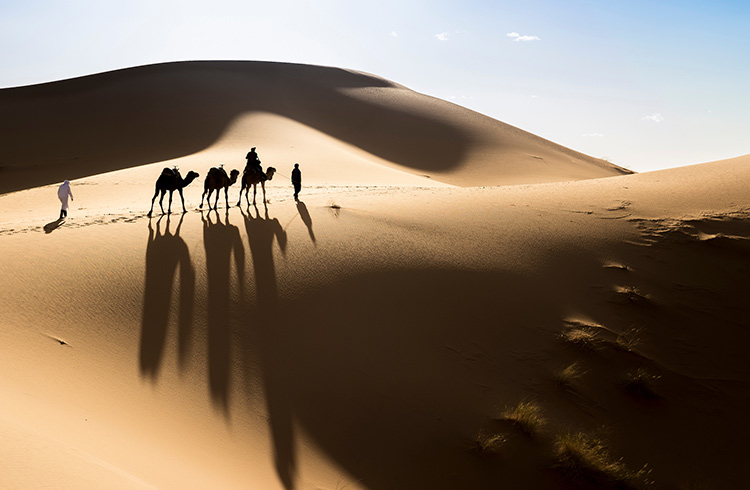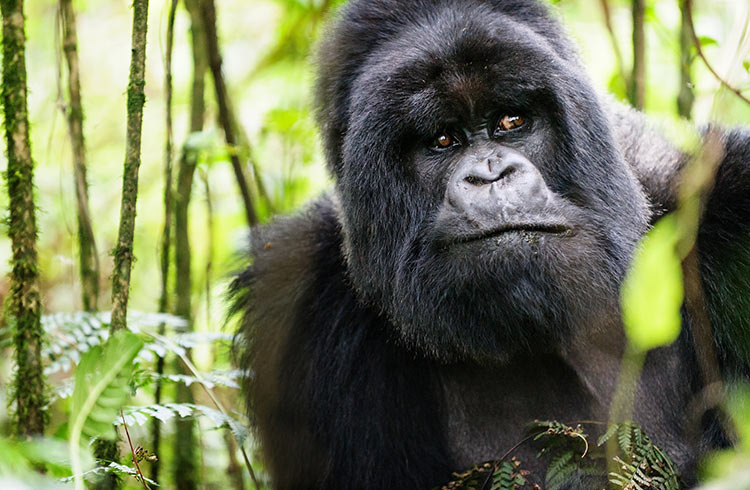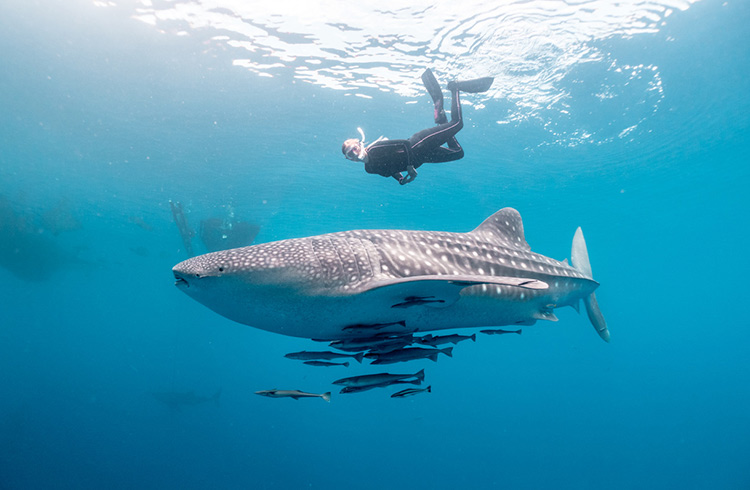Is it Ethical to Ride Camels? What You Need To Know
We ride horses; we don’t ride elephants. But is it OK to ride camels when we’re traveling, and how can we ensure we’re not harming them in any way?
 Photo © Richard I'Anson
Photo © Richard I'Anson
I first fell in love with camels in western Mongolia. Every day for a week my fellow trekkers and I walked beside them across central Asia’s grassy steppe. The camels obligingly carried our tents, gear bags and supplies, and were more even-tempered than the horses with us. In the middle of each day, we’d shed our backpacks and boots for a couple of hours while the camels were unloaded so they could rest and roam.
Sometimes at camp, we’d watch them roll on the ground, taking dust baths to kill mites. Or we’d stand transfixed as a camel train passed by, loaded with the worldly possessions of a nomad family moving house.
Although I didn’t ride any camels on that trip, I’ve done that in various other sandy destinations including the Sahara-like dunes of Rajasthan in northern India and Cable Beach in Broome, Western Australia. But with elephant rides banned a few years ago and a growing awareness that 'animals are not ours', as PETA (People for the Ethical Treatment of Animals) puts it, it seems timely to ask: should we still be riding camels?
- Why do we ride camels?
- One hump or two?
- Does riding harm camels?
- The case for camel riding
- Camels have their say
- Ethical guidelines
Why do we ride camels?
Camels have long provided nomadic peoples in northern Africa and the Middle East with milk, meat, leather and fuel (from their dung) and carried them and their belongings. They were first domesticated more than 5,000 years ago, in fact, and have since been vital in desert exploration and military campaigns. Even today there are more than 50 words for “camel” in Arabic, an indication of how important they are in Middle Eastern culture.
One hump or two?
Most camels are one-humped dromedaries (two-humped Bactrian camels make up about 6 percent of the world’s camels) and there are an estimated 14 million of them worldwide, including more than a million feral camels in Australia. Calves are born hump-less but start growing one when they start eating solid foods. Eventually, a camel’s hump will store up to 80 pounds of fat – not water, as is commonly believed. It is true, however, that camels don’t need as much water as other mammals. They can lose 25 percent of their body fluids before they’re technically dehydrated (most other mammals, including humans, can lose only 15 percent) and can drink up to 40 gallons at a time.
Does riding harm camels?
According to the UK-based Born Free Foundation, there’s no evidence that riding camels hurts them. Built for tough lives, they’re not called ‘ships of the desert’ for nothing: an adult camel can travel up to 25 miles (40km) a day, carry up to 1,300 pounds (590kg) on its back and survive for 10 days without water.
But should we ride them? Because camels are domesticated, not wild, you could argue that riding a camel is like riding a horse, making camel-riding an animal welfare issue rather than an ethical one (ignoring, for now, the notion that all animals were once wild).
The problem is that in many of the countries offering tourists camel-riding experiences, such as Egypt, Jordan and Morocco, there are no strict animal welfare laws, or they’re not enforced. In 2018 PETA released disturbing footage from Egypt of camels being beaten with sticks and urged tourists not to do camel rides, anywhere. “Such abuse has no place in modern tourism,” said Ashley Fruno, PETA Asia’s director of animal assistance programs, at the time.
The case for camel riding
“Our development as a species is intertwined with key species of animals, specifically the transporters: horses, camels and elephants,” says Karen Ellis of Camel Treks Australia, which runs multi-day treks in outback South Australia as well as India and Mongolia. Raised by animal liberationists, Ellis lectures on camel welfare internationally and cares deeply about the well-being of all animals.
“Riding camels, in particular, because they are desert animals, connects us with some of the world’s wildest places,” she says. “[Not only that but] interacting with animals can teach people how to treat other animals. It’s the same as experiencing wild natural environments; if we lock people out of national parks, how will they learn to value them?”
Camels have their say
Because camels are large animals, riding them – or indeed, just climbing onto one – requires their cooperation. They also tend to make their discomfort known. “Camels are never afraid to speak up if they’re not comfortable,” says Ellis. “Our female camels are like divas.”
Unfortunately, their protests are often ignored because of a popular misconception that camels are cranky by nature. “If a camel is cranky, it’s probably because people have treated it badly and it’s traumatized,” Ellis says. “Our camels [Camel Treks Australia has more than 30] don’t ‘spit’ [when stressed, camels actually regurgitate recently chewed food] or bite and camels are naturally curious, gregarious, and capable of highly intelligent interaction.”
Ethical guidelines
The decision to ride a camel or not will always be a personal one, but here are a few guidelines to help ensure that the camels you encounter will be well-treated:
- Plan ahead: go with tour operators that have animal welfare policies, such as World Expeditions or Intrepid Travel, says World Animal Protection, rather than opting for camel rides with hawkers outside tourist sites such as Petra in Jordan or Egypt’s Great Pyramids.
- Question time: ethical operators will be happy to tell you how their camels are trained and treated.
- Deserts only: camels evolved to survive in arid environments and should never be working in tropical, humid, non-desert landscapes.
- Camel check: the camels should look settled and calm, says Karen Ellis. “A relaxed camel chews its cud.” Do they look healthy and well-fed? Are their eyes clear? Is their skin in good condition, with no wear spots under harnesses, saddles or halters? And if a camel has a nose-peg, look for signs of rough treatment such as bleeding or torn skin.
- Human kindness: how do the cameleers speak to and treat the camels? Are they gentle or do they shout, whip them or yank on their reins?
- One person, one camel: Tour operators seeking to maximize profit will often put two people on one camel. Ask to ride your own camel.
- Ride on: multi-day camel safaris with a leisurely pace tend to be better for camels than short out-and-back jaunts that can make for long stressful days, particularly at competitive tourist sites.
- Speak out: if you believe any camel is being mistreated, tell the tour operator, write a review on TripAdvisor, and report it to an animal welfare organization such as SPANA, which helps working animals, or Animondial, a consultancy dedicated to responsible animal tourism. Tourists have power and standing up for animals creates change.
Related articles
Simple and flexible travel insurance
You can buy at home or while traveling, and claim online from anywhere in the world. With 150+ adventure activities covered and 24/7 emergency assistance.
Get a quote


No Comments